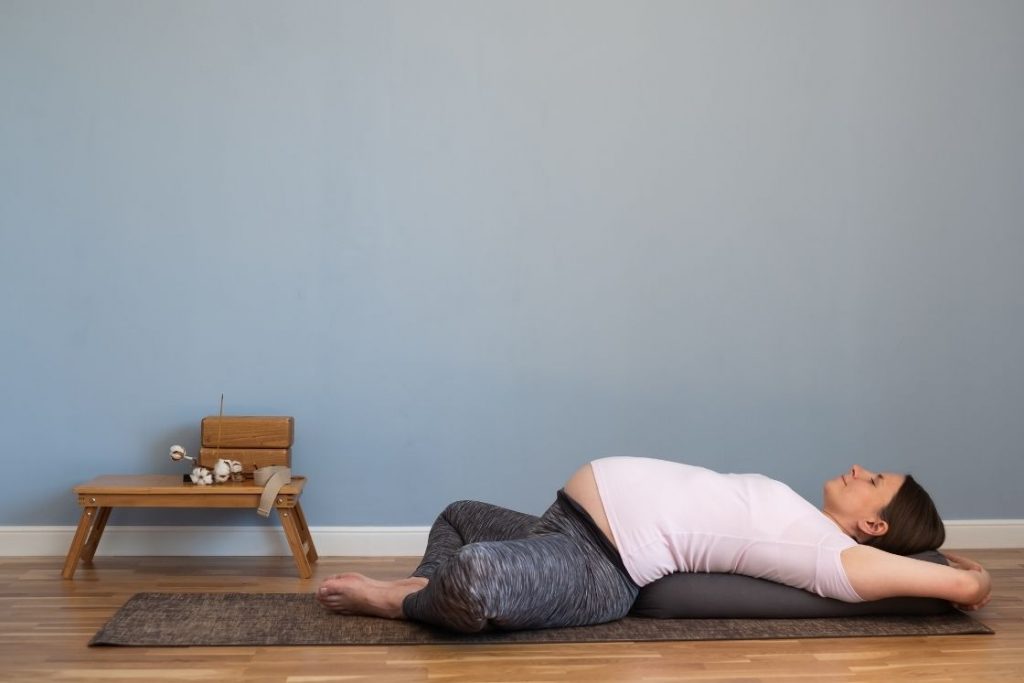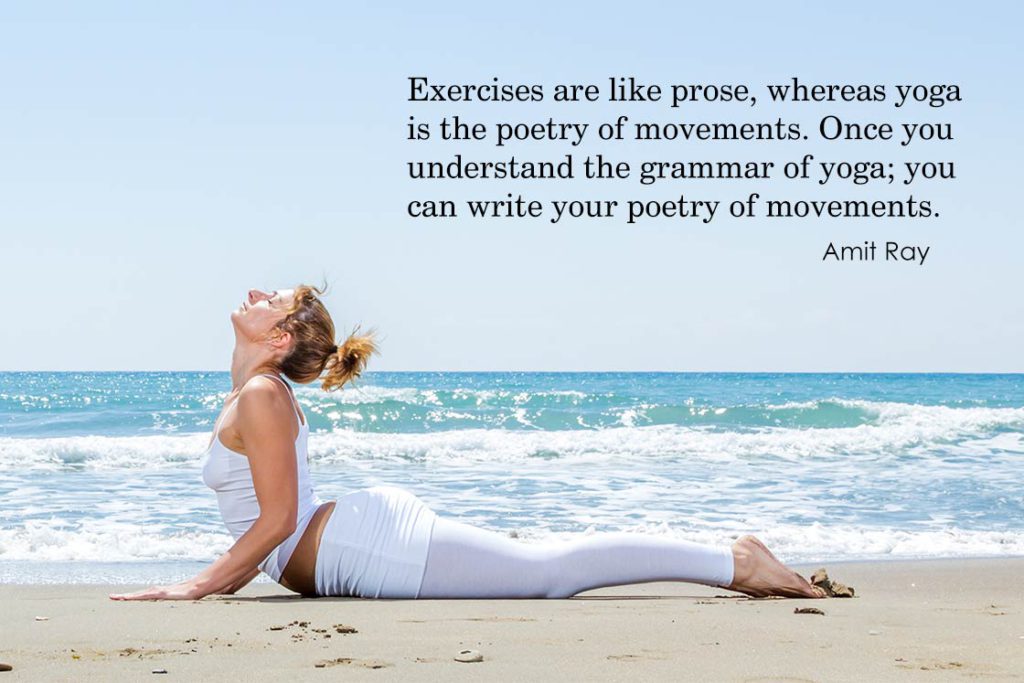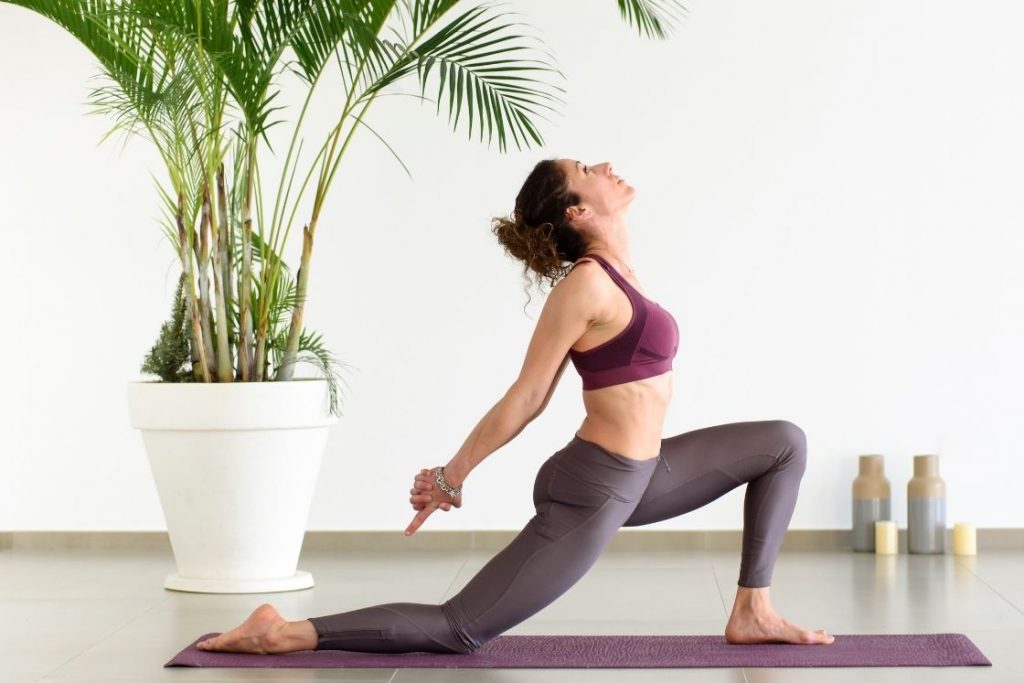
The word Yoga has been derived from the Sanskrit root term yuj which means ‘union’ or ‘to unite’.
Yoga in its simplest definition is called to the union of mind, body, and soul to achieve a greater sense of self and enhance your personality. Ever since it was introduced to Western cultures, it has seen exponential growth in its followers and practitioners.
However, just like any other practice, with popularity comes myths and misconceptions, that are often perceived as truths. You may have heard or read some of them somewhere.
In this article, we will bust some of the common yoga myths along with some interesting facts about yoga to get you inspired.
1. Myth – Yoga requires flexibility
Fact – One of the most popular yoga myths is that people usually think they need to be flexible enough before start practising yoga. The truth is, flexibility isn’t a prerequisite for yoga.
While you may have seen people moving their bodies in unimaginable poses, it is not necessary to have a flexible body for yoga practice. Yoga helps you build flexibility over time by stretching your muscles. Gaining flexibility from yoga is one of its many benefits and is seen as a byproduct of consistent yoga practice.
The ultimate goal of Yoga is to the realization of one’s inner self. You don’t need to be flexible to do yoga but regular practice of yoga will surely increase your flexibility which allows you a greater ability to move freely without fear of injury. Flexibility can be considered a sign of being physically active which supports the journey of a yogi.
2. Myth – Yoga is associated with one religion

This is a huge myth that yoga is associated with a religion and practising yoga is similar to following the Hindu or Buddhist religion. In fact, many people from different religions even today think if they do yoga they will betray their religion.
Fact – Although yoga is not a religion in itself, It is true that it is somewhat connected to religion. Yoga has most of its historical roots in Hinduism, but also in Jainism and Buddhism. On the other hand, when it comes to practice, people from all religions can do and benefit from yoga while still following their own religious beliefs.
You can be of any religion and still practice every aspect of Yoga. For example, it’s common to chant OM to Hindus and Buddhist people because OM echoes the sound of harmony in one’s body and mind. To feel this harmony, you can chant ‘Om’ however, without being a part of the Hindu or Buddhist religion.
The underlying philosophy of yoga as a spiritual practice is the unification of the mind, body and soul to realise the inner self. For this, you need dedication and patience, not belonging to a religion.
3. Myth – Yoga is for girls
Fact – For people living under this misconception that yoga is a girl thing, it may come as a huge shock that the most famous yogis have been men. And in ancient times, the practice of yoga was only meant for men. The masters who were instrumental in spreading yoga all over the world were men. Women have only been allowed to practice since the 1930s.
Yoga is for everyone. It doesn’t differentiate between gender, age, race, caste, ethnicity, religion, etc. In fact, yoga will help you in stimulating your heart chakra to feel love for all and enhance the ability to connect with the higher power.
4. Myth – Yoga cannot be done by pregnant and menstruating women

Fact – Pregnant women do have a restriction in most forms of movement however, yoga is relatively safe for them. There are some prenatal yoga poses and variations of yoga exercises that pregnant women can practice to keep them healthy. You will be surprised to know that some hip-opening poses will be extremely beneficial during childbirth.
Also read: Tips to practice Surya Namaskar during pregnancy
Similarly, menstruating women can also comfortably perform yoga. Many forward and backbends bends can help relieve the pain that comes with menses. Women are told to be cautious during the menstrual cycle because the body produces the hormone to relax the muscle and joints. There is a chance that if you practice negligently, you may injure or pull a muscle.
5. Myth – Most yoga is about doing physical postures (Asanas)
Fact – Yoga is more than just asanas or physical postures. It involves controlled breathing techniques, engaging your bandhas, stimulating your energy systems, balancing your opposite energies, and harmonizing your mind-body-spirit through meditation.
Physical postures, which are called asanas, are merely 1/8th part of eight-limbed yoga.
6. Myth – Yoga is just a form of workout

Fact – This may be partially correct as some yoga styles focus on releasing sweat to release toxins and aid in weight loss. However, if you think you can get six-pack abs and muscles like a body-builder, you are in for a shock.
Yoga focuses on overall health instead of just muscle building. It has other aspects of fitness attached to it as it energizes your body instead of making you tired. The yoga asanas have to be practised in a gentle and slow manner while focusing on your breathing.
You may think that a thin lean yoga body is nothing compared to a body built in gyms. However, it is much healthier, stronger, and long-lasting. The yoga body has its energy channels opened and relaxed with the prana energy flowing freely through them.
7. Myth – Yoga can be learned from books
Fact – Refrain from catchy titles of the multitude of yoga books available online or in bookstores. No one can learn the true art of yoga from written words. You will find a ton of information on how to perform asanas with cues however, without proper guidance from a teacher, you will not be able to practice it properly.
Half-baked knowledge can cause irreparable damage to your body. A trained teacher will be able to spot signs and subtle aspects of your body that you may not. A book may inspire you to take up yoga but it cannot teach you everything under the sun.
8. Myth – Yoga is time-consuming
Fact – Another misconception is that practising yoga takes up a lot of time. There are classes that range from 30 minutes to 90 minutes of practice. And if you’re thinking of a virtual platform, you can even have lesser time. You can easily fit yoga into your schedule, provided you are dedicated and serious.
Also practising yoga in the morning and evening time is not the only form of practice. That is only the physical aspect that you will be concentrating on. You need to imbibe all the elements of yoga that you practice on the mat in your real life as well.
9. Myth – Yoga practice means spending money on accessories
Fact – This is a completely bogus built by the yoga industry to promote their products. You do not have to go broke before even starting to search for a yoga class. You can practice yoga in your comfy sweatpants and top. Most classes have yoga mats and props available for rent or you can easily substitute them with other household items.
Yoga is not about showing off, it is about finding a deeper connection with the Self and the divine within.
10. Myth – Yoga asanas are rigid and cannot be customized

Fact – If that was the case, there would not have been millions of people who are currently practising one or the other yoga forms. It is understandable that everybody’s needs and requirements are different. While some may easily adapt to various poses easily, others require patience and dedication to get into them.
To cater to these requirements, yoga poses can be easily modified. You need to listen to your body and accordingly adjust with the help of your instructor. Yoga is not a competition where you will get full marks if you perform an asana perfectly in the first go. The ultimate focus should be on your breath and achieving a calm and relaxed state of mind.
Now that we cleared up some misconceptions about yoga, have a look at some interesting facts about yoga’s history, practice, and benefits.
General Yoga Facts
- 72% of yoga practitioners are women.
- Currently, there are more than 100 yoga styles practised in the world.
- The way you act on a yoga mat is a mirror of the way you act in real life.
- It is estimated that over 300 million people are practising yoga as of today.
- The Swastika is originally a yoga symbol. It comes from the Sanskrit word Svastik which means “that which is associated with well-being”.
- “Yogi” is the term used for male practitioners. For females, the term “yogini” is used.
- 21st June is celebrated as International Yoga Day.
- In the 2016 Summer Olympics, yoga was introduced as a sport where participants performed 5 mandatory yoga asanas and the last 2 asanas of their choice. The judgment was made on flexibility, strength, timing, and breathing. Yogini Briana Bernal was the winner of the 2016 Summer Olympic yoga.
- In 2015, a prison in the Indian city of Pune, Maharashtra used yoga as a means to improve the mental and physical health of the inmates. A significant reduction in violent crimes within the prison was seen. Also, if they passed a yoga test with good marks, they could get a reduction in their sentence.
- On June 21, 2015, the Indian Postal Service released commemorative stamps to celebrate the first International Yoga Day.
Historical Yoga Facts
- Yoga is 5000-year-old philosophy. The first known appearance of the word “yoga” with the same meaning as the modern term is in Katha Upanishads which was composed approximately between the 5th-3rd century BCE.
- Swami Vivekananda was the first person to introduce the concept of yoga to the western world. In 1893 when he addressed the Parliament of Religions in Chicago.
- Yoga was originally practised as a form of physical, emotional, and mental healing.
- Traditionally, Yoga was practised only by men. Women came into the picture until 1937. Eugenia Peterson-Labunskaya was the first female to be inducted into an Indian ashram.
- The first yoga mat was developed by Angela Farmer in 1982.
- Yogis count the human life span by the number of breath counts, not the years. This is why there is an emphasis on pranayama (controlled breathing techniques) in yoga.
- As per Hinduism, Lord Shiva is the Supreme Lord of Yoga. He is considered the Adi Guru and Adi Yogi (Adi means First) who has imported the Yoga Knowledge to Seven Saints or Sapt Rishis.
Yoga Facts Related to Benefits
- You can work all your muscles through yoga
- Yoga helps in improving self-esteem.
- Regular yoga practice improves sleep quality by reducing stress.
- It supports the practitioners in long-term weight by encouraging mindful eating.
- It helps in alleviating symptoms of OCD, anxiety, depression when used as an alternative method of therapy.
- Office Yoga can help in reducing back pains and improve productivity.
- As per research funded by Alzheimer’s Research and Prevention Foundation, yoga can significantly reduce the onset of Alzheimer’s.
- Regular practice can delay the aging process.
Practice Facts
- There are 84 classical yoga asanas.
- The Headstand is considered to be the most dangerous yoga asana.
- The Lotus pose is one of the most popular poses.
- Savasana is one of the most important and challenging poses.
- Power poses, which involve chest openers or poses that encourage you to take up space have been shown to enhance self-confidence and self-esteem.
Fun Facts
- George Harrison of Beatles was a famous yogi and he is considered to be a catalyst to spread yoga among the masses in the 70s.
- 56 hours – that’s the longest recorded yoga session.
- Doga – Yoga for Dogs is a new trend that is gaining popularity in the West. It was started in 2002 by Suzi Teitelman in New York. Practitioners of this yoga engage their furry friends side-by-side.
- Currently, the Guinness Book of World Records holder for the oldest yoga teacher is held by 85-year-old Australian yogi Bette Calman. However, 90-years-old Gladys Morris from Royton, Oldham has petitioned to be the world’s oldest yoga teacher.
- On June 21, 2018, on International Yoga Day, India created a world record for the largest yoga gathering which involved 100,984 participants.
- The global yoga market is estimated to be more than $80 billion with close to $16 billion being spent on yoga equipment and accessories by Americans every year.
- There are approximately close to 1 billion yoga posts on Instagram. Most of the captions are about good feelings and appearance with women in skimpy clothing. Only close to 3% have actually linked their posts to the traditions of yoga.




